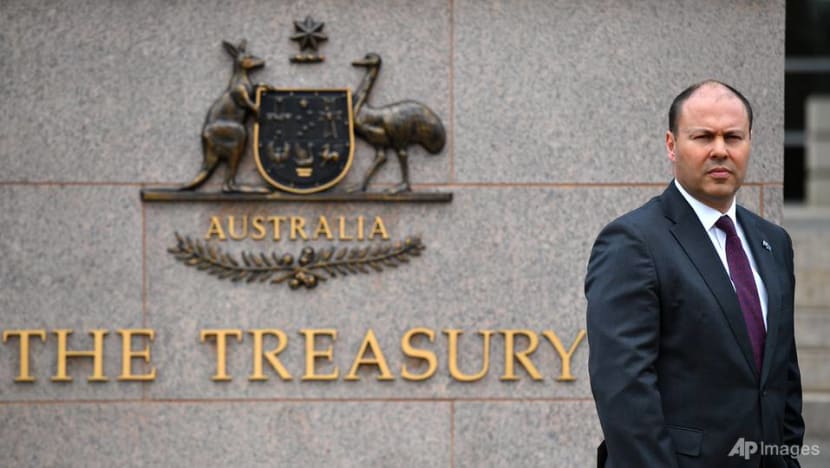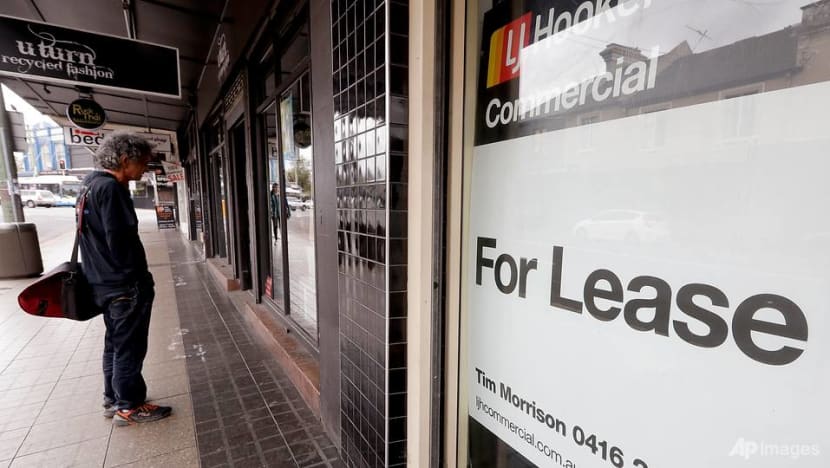Australia plans massive COVID-19 pandemic budget, record deficit

Australia's Treasurer Josh Frydenberg is photographed outside The Treasury in Canberra, Oct 5, 2020. (Photo: Mick Tsikas/AAP Image via AP)
CANBERRA: The Australian government on Tuesday (Oct 6) announced plans to cut income taxes, create jobs for young people and stimulate business investment with a raft of pandemic measures that would create a record A$214 billion (US$153 billion) deficit in the current fiscal year.
Treasurer Josh Frydenberg announced his annual budget plans for the year that started on Jul 1, with economic forecasts based on an assumption that a COVID-19 vaccine will be available next year.
But the Treasury Department has warned that economic realities could be "substantially different" from its forecasts without a vaccine.
Net debt will increase to A$703 billion, or 36 per cent of gross domestic product, at the end of the current fiscal year and peak at 44 per cent of GDP in mid-2024 when debt will exceed A$966 billion.
"This is a heavy burden, but a necessary one to responsibly deal with the greatest challenge of our time," Frydenberg told Parliament.
READ: Australia rolling back banking regulations to spur economy
At its peak, net debt as a share of the Australian economy would be half the current proportion in Britain, a third of the share in the United States and a quarter of the Japanese proportion, Frydenberg said.
More than 11.5 million taxpayers among the Australian population of 26 million people would gain an income tax cut backdated to Jul 1, according to the plan. It needs Parliament's endorsement.
More than 7 million people would receive a tax cut of more than A$2,000 a year. The tax cuts would cost Australia's coffers more than A$50 billion over four years.
READ: Chinese investment in Australia plunges as tensions mount
The government is also offering a "JobMaker hiring credit" to encourage businesses to hire younger Australians. Young people have suffered most from job losses created by the pandemic.
Businesses that provide a job to an unemployed person under 30 years old would be gjven A$200 a week for up to a year. The payment would be half that if the employee is aged between 30 and 35. The employees must be given at least 20 hours of work a week.
The government expects JobMaker would support 450,000 young employees.

To boost business investment, the vast majority of companies would be allowed to write off the full value of eligible assets against their tax debt.
"It will dramatically expand the productive capacity of the nation and create tens of thousands of jobs," Frydenberg said.
Loss-making businesses would also be able to claim pandemic losses against profits they made as far back as 2018 to 2019, generating tax refunds for many.
READ: Australia's big businesses chafe at COVID-19 border closures
Frydenberg said he will introduce into Parliament on Wednesday a Bill that would make his proposed income tax cuts and business tax breaks law.
"I want these measures to be implemented as fast as possible," he said.
The government expects the Australian economy will shrink by 1.5 per cent in the current fiscal year before expanding by 4.75 per cent in 2021 to 2022.
Unemployment is expected to peak at 8 per cent in the December quarter before receding to 5.5 per cent in 2023 to 2024.
In August, the official unemployment rate was 6.8 per cent. The government estimates it would already be 12 per cent if the government had not paid employers A$101 billion to keep 3.5 million people in jobs during the pandemic.
READ: Australia to ease border limits and allow more citizens home
Around 10 per cent of Australian workers have lost their jobs or remain employed through the government subsidy despite working no hours.
The government forecasts that the annual deficit would shrink to A$112 billion in 2021 to 2022 and continue downward to 2024.
The budget forecasts assume that a COVID-19 vaccination program is "fully in place by late 2021" in Australia and pandemic restrictions continue to ease.
But the outcomes could be much different if that is not the case, the budget documents said.
"The range of possible outcomes for GDP and unemployment in particular is substantially wider than normal," the Treasury department said. "This translates into a higher than usual degree of uncertainty for the estimates."
Early in 2019, the government forecast a A$7 billion surplus in the year that ended on Jun 30. That would have been Australia's first surplus in 12 years.
But the pandemic turned that result into a A$85 billion deficit.
The pandemic has caused shortages in supply chains and highlighted the decline in Australia's manufacturing industries that have failed to compete against Chinese imports.
The government plans to invest A$1.3 billion in areas of national manufacturing priority, including medical products, defence and the space industry.
BOOKMARK THIS: Our comprehensive coverage of the coronavirus outbreak and its developments
Download our app or subscribe to our Telegram channel for the latest updates on the coronavirus outbreak: https://cna.asia/telegram










